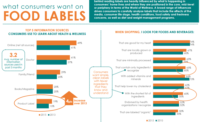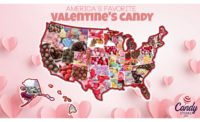The American consumers’ love affair with snacking began more than 100 years ago with the humble and timeless potato chip.
Snacking has now evolved into an actual meal category with sales of more than $64 billion dollars and almost endless products available to meet consumers’ wide-ranging tastes and demands.
This shift is the result of consumers’ active, mobile lifestyles. They are on the go and eating traditional meals around a table less often. They’re looking for snacks that fit into this lifestyle while delivering value and taste. A consumer’s mental checklist of must-haves while selecting a snack might be: portable, easy/fast, value priced, healthy, delicious and shareable.
Typically eaten at a time other than traditional mealtime, snacks can be either a single food group (think a piece of fruit or chunk of cheese) or be a portion of a meal category (like half a sandwich).
Regardless of the type of snack, consumers are snacking three or more times per day, which represents an increase of 12 percent from 2010 to 2013. And, 60 percent of consumers are snacking after noon.
It comes as no surprise that the most popular on-the-go snacks are easily portable or hand-held.
In fact, on-the-go snacking is a growing trend that’s up 5 percent since 2009, with 45 percent of consumers looking for convenient, easy-to-pack snacks. Snacks available in multi-packs or pre-packaged in individual portions fit consumers' need for convenience. In this category, consumers choose cereal and snack bars (31 percent), meat snacks (29 percent) and salty snacks (23 percent) for a quick bite.
1. Salty snacks made healthier.
Health is the priority for many consumers especially when it comes to their diet. Thirty percent of consumers see snacking as part of a healthy diet, and 65 percent are trying to choose/eat healthy snacks.
But for most, healthy choices feel like a tradeoff because while consumers want snacks to be healthy, they also want to feel satisfied with both taste and portion.
In years past, manufacturers have made healthier potato chips, but consumers weren’t fond of the cardboard texture or lack of taste. They expect a healthy chip to have the same satisfying crunch of a regular chip along with the great taste.
Enter sweet potato chips, wholegrain snacks, ready-to-eat popcorn and popped chips — the darling of snackers and dippers everywhere — all designed in light of rising obesity rates to give consumers healthy alternatives to traditional salty snacks. The popularity of chip alternatives reflects the consumers’ willingness to snack healthier and make a substitute for the tried and true potato chip.
2. Sparkling clean labels.
Another trend related to the health consciousness of consumers is the preference and demand for a clean label. Shopper identify products with complicated sounding preservatives as unnecessary and associate products containing them as being unhealthy. To the consumer, the cleaner the label, the healthier the product.
3. The trump card is taste.
Ask consumers why they are snacking and 66 percent will tell you it’s because of the enjoyment of eating or to satisfy an emotional craving, while 61 percent of consumers snack to stave off physical hunger between meals.
But at the end of the day, if it doesn’t taste good, consumers would rather not waste the calories on it. Flavor is everything, and by using flavors, manufacturers can bring excitement and variety to healthy snacks like popcorn, wheat crackers or yogurts.
4. Sharing is caring.
Today’s consumer is all about sharing. Whether life events on Facebook or tweeting about the great meal they just ate, consumers love sharing what they know with their friends, families, co-workers and many times, complete strangers.
At the root of all this sharing is the need to connect. U.S consumers also do this in their snacking, especially around holidays, sporting events, office parties or at the park. Bags of shareable snacks make connecting easier and turn a simple event into a shareable moment. Restaurant menus also embrace this trend with sliders, tapas, or flatbreads — all created with sharing in mind.
5. It’s all about the Benjamins.
No matter how good snacks taste, if a snack is priced too high, consumers will seek out alternatives. Shoppers are loyal to brands, but willing to sacrifice their loyalty for price.
Also, where consumers shop for snacks is shifting from traditional grocery or drug stores to multi-outlets like Target, Wal-Mart or Costco where they can buy a variety pack of their favorite snacks at a fair price.
6. Snacks should have it all.
Really anything can be a snack: a cup of soup, a bar, cheese and crackers, waffles-to-go, Greek yogurt.
But as we know, format is the key to bringing meal concepts to snack size. Many larger formats have been miniaturized (think the classic Ritz Bitz from the 90’s — ahead of it’s time) while shareable snacks have their place.
But for long-term success and staying power, a prepared snack has to fit the trends above. Snacks that fit all of these attributes will win in the snacking category.







